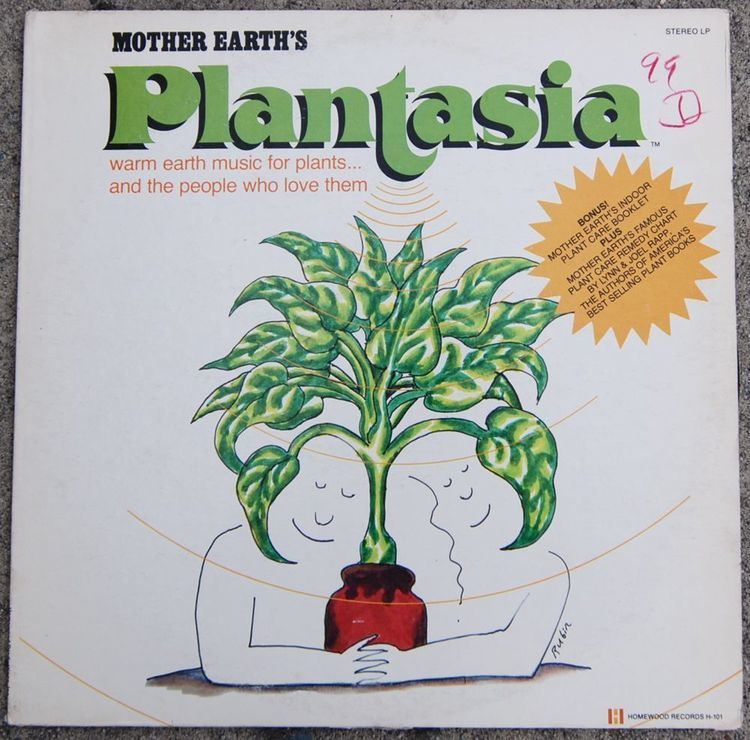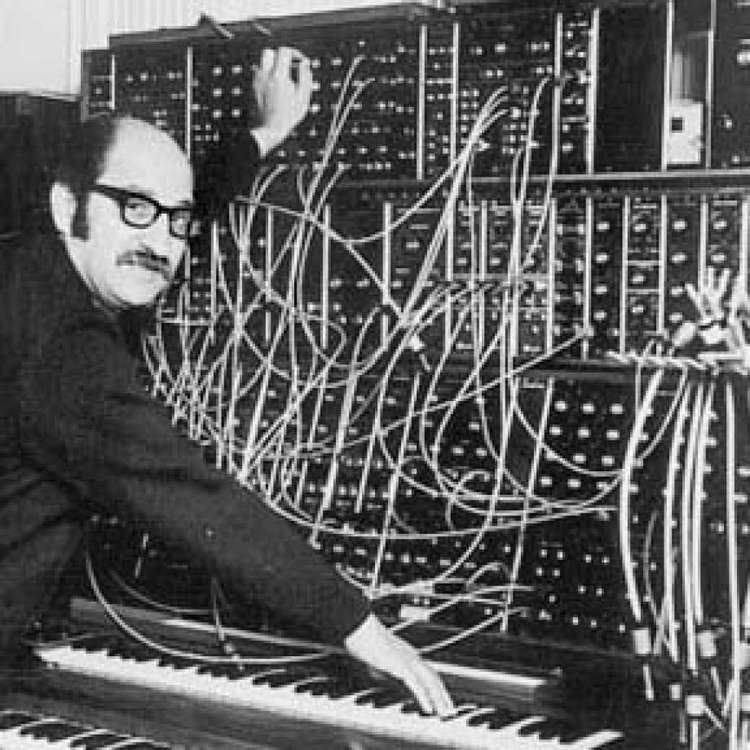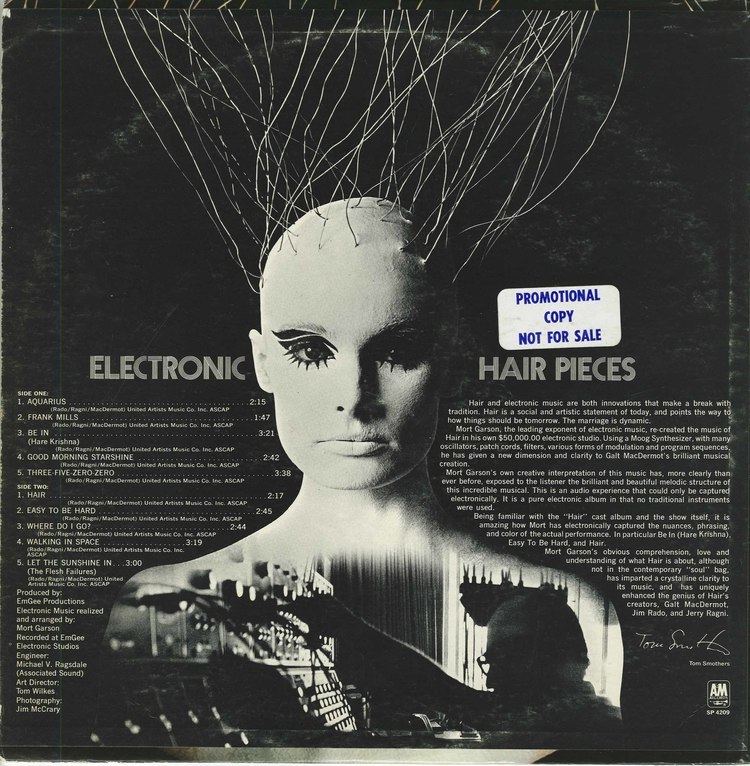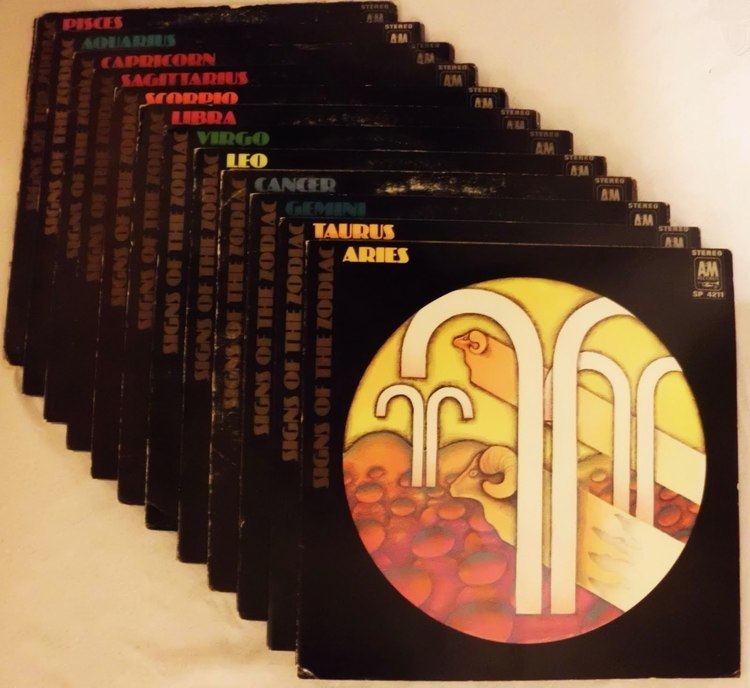Birth name Morton S. Garson Role Composer Name Mort Garson | Labels various Years active 1940s – 1980s Education Juilliard School | |
 | ||
Born 20 July 1924Saint John, New Brunswick, Canada ( 1924-07-20 ) Occupation(s) Composer, arranger, songwriter Albums Mother Earth's Plantasia, The Zodiac: Cosmic S, The Wozard of Iz, Electronic Hair Pieces, Music for Sensuous Lovers | ||
The Music Man: Mort Garson Featurette
Morton S. "Mort" Garson (20 July 1924 – 4 January 2008) was a Canadian-born composer, arranger, songwriter, and pioneer of electronic music. He is best known for his albums in the 1960s and 1970s that were among the first to feature Moog synthesizers. He also co-wrote several hit songs, including "Our Day Will Come", a hit for Ruby and the Romantics. According to Allmusic, "Mort Garson boasts one of the most unique and outright bizarre resumés in popular music, spanning from easy listening to occult -influenced space-age electronic pop."
Contents
- The Music Man Mort Garson Featurette
- Plantasia
- Early life
- Early career
- Later career
- Films television and theatre work
- Death
- In popular culture
- Discography
- References

Plantasia
Early life

Mort Garson was born in Saint John, New Brunswick, Canada. He later moved to New York City where he studied music at the Juilliard School of Music. He worked as a pianist and arranger before being called into the Army near the end of World War Two.
Early career
After leaving the forces he became an active session musician, with an ability to carry out any or all of the musical chores on any given session: composer, arranger, orchestrator, conductor, and pianist as required. In 1957, he co-wrote Brenda Lee's minor hit "Dynamite" with Tom Glazer, and he also co-wrote Cliff Richard's 1961 UK hit "Theme for a Dream". In 1963, with lyricist Bob Hilliard, he wrote one of the great lounge hits of the 1960s, "Our Day Will Come", a hit for Ruby & The Romantics and more recently covered by k.d. lang and Take 6 for the soundtrack of the movie Shag.

Garson spent the mid-1960s on a rapid succession of accompaniment and arrangement jobs: two Doris Day albums (Sentimental Journey and Latin for Lovers), Mel Tormé's Right Now! album of contemporary covers like "Secret Agent Man," and Glenn Yarborough's highly successful cover of Rod McKuen songs, The Lonely Things. He also arranged for the Lettermen on Capitol Records, provided background to Laurence Harvey reading poetry on Atlantic Records, and provided arrangements for Esther Phillips, Julie London, Nancy Wilson, Chris Montez, Leslie Uggams, Joanie Sommers and many others. He was a favorite of producers when the job involved soft pop vocal groups and string ensembles, and was responsible for a wide variety of easy listening records, including Bossa Nova for All Ages by the Continentals, Symphony for the Soul by the Total Eclipse, and Sea Drift by the Dusk 'Til Dawn Orchestra.
With Perry Botkin Jr., he arranged and conducted easy listening arrangements of big pop hits, among them the Hollyridge Strings' Play the Beatles Songbook album series and their Play the Hits of Simon & Garfunkel. He also worked on albums and singles by The Sugar Shoppe, the Sunset Strings, and the Love Strings, and released singles under his own name. He arranged The Sandpipers' 1966 hit, "Guantanamera", and co-wrote its B-side "What Makes You Dream, Pretty Girl?" with lyricist Jacques Wilson, with whom he worked on later projects. In 1968, he was responsible for the string arrangements on Glen Campbell's international hit "By the Time I Get to Phoenix."
Later career
In the late 1960s, Garson became one of the first arrangers and composers to work with the newly available Moog synthesizer, and his electronic albums from the period are now highly prized among collectors and exotica fans. A suite of Garson compositions with words by Jacques Wilson, released on Elektra Records, The Zodiac : Cosmic Sounds - Celestial Counterpoint with Words and Music includes tracks for each of the 12 signs of the zodiac. While Garson was writing the music, he was introduced to Robert Moog and decided to incorporate his invention into the album. The recording features Paul Beaver on a variety of electronic instruments with voice-overs by Cyrus Faryar. Released in late 1967, it was the first album recorded on the West Coast to make use of the Moog synthesizer. Also in 1967, he arranged the obscure single "See The Cheetah", credited to the Big Game Hunters.
Another moog album, Electronic Hair Pieces, covered songs from the hippie-influenced musical, Hair. The mod album cover art for Electronic Hair Pieces featured a model with a wired-up skull; liner notes were provided by Tom Smothers of the Smothers Brothers. Another album, The Wozard of Iz, a psychedelic satire based on The Wizard of Oz, also with words by Jacques Wilson, featured Bernie Krause providing environmental sound effects and Suzie Jane Hokom voicing Dorothy. (The widely repeated claim that Suzie Jane Hokom is a pseudonym for Nancy Sinatra is untrue.)
Following the success of the original Zodiac LP, Garson went on to compose and arrange a 12 album series of zodiac albums for A&M Records, one album for each sign. Like Zodiac, each album contained original tunes with heavy use of electronics. In 1971, he composed an entirely instrumental electronic Black Mass album, released on Uni Records under the pseudonym Lucifer, that again featured the Moog. Jason Alkeny at Allmusic describes the Black Mass album as "undoubtedly... his masterpiece". Garson also released, in 1972, a record of music-and-moans to capitalize on the best-seller at the time, The Sensuous Woman by "Z". In 1974, he composed the electronic music score for the 18th Annual Grammy Award winning Best Children's Recording of The Little Prince narrated by Richard Burton. The following year, he released an album titled Ataraxia: The Unexplained designed to accompany meditations to the mantra of the listener's choice. Mother Earth's Plantasia, which was released in 1976, was an album of Moog compositions to be played for growing plants.
Films, television and theatre work
Garson also worked in television and film, scoring a wide variety of music for many different movies and TV shows, from Beware! The Blob! to Kentucky Fried Movie to National Geographic specials, although it is Elmer Bernstein who is credited with composing the well-known National Geographic orchestral theme that first appeared in on the magazine's TV specials in 1966.
Garson's music was used as incidental music during the television transmissions of the Apollo 11 manned moon landing by Neil Armstrong and Buzz Aldrin in 1969. He said:
"The only sounds that go along with space travel are electronic ones... The Apollo film shows different facets of the flight - blastoff, separation of the stages of the rocket, scenes of the moon at close range, of the astronauts playing games in the ship and of earthrise. [The music] has to carry the film along. It has to echo the sound of the blastoff and even the static you hear on the astronauts' report from space. People are used to hearing things from outer space, not just seeing them. So I used a big, symphonic sound for the blastoff, some jazzy things for the zero-G game of catch, psychedelic music for a section that uses negatives and diffuse colors on shots taken inside the ship, and a pretty melody for the moon. After all, it's still a lovely moon."
In 1972 he wrote the music for the Larry Hagman-directed movie Son of Blob (also known as Beware! The Blob). He also scored the 1974 Fred Williamson film Black Eye, and adapted the music for Mel Brooks' and Carl Reiner's 1975 animated television special The 2000 Year Old Man.
In 1983 he composed the score for the West End musical Marilyn!, which opened at the Adelphi Theatre on 17 March 1983. Jacques Wilson wrote the lyrics for the show which starred Stephanie Lawrence as Marilyn Monroe. He then scored the action films Treasure of the Amazon (1985) and Vultures (1987), which both starred Stuart Whitman.
In 2002 Garson composed the score for "When Garbo Talks!" a new musical with book and lyrics by Buddy Kaye that had its world premiere 15 October 2010 at the Long Beach Performing Arts Center, International City Theatre. Garson and Kaye previously collaborated on The Little Prince Narrated by Richard Burton, Grammy Award-Winner ("Best Children's Recording").
Garson was very closely associated with Heatter-Quigley Productions, creating the theme songs and music cues for the following TV game shows:
The music for the first five featured Garson playing synthesizers, but the Battlestars package used more conventional marching band orchestration.
Death
Garson died of renal failure in San Francisco in 2008, at the age of 83.
In popular culture
A sample from Garson's "Planetary Motivations (Cancer)" was incorporated into DJ Shadow's 1996 song "Building Steam with a Grain of Salt," from the album Endtroducing...... In the 1994 Peter Lynch short film Arrowhead, Ray Bud (played by Don McKellar) manipulates a dead fish while singing Mort Garson's closing theme to the 1970s Canadian nature program Untamed World. The song "Plantasia" from the album "Mother Earth's Plantasia" is used in the documentary Lil Bub & Friendz. "Deja Vu" is used as the theme for the Maximum Fun podcast The Adventure Zone, with "The Unexplained" and "Wind Dance" also being used later on the series as an alternate theme and background music, respectively. Additionally, the track "Concerto for Philodendron & Pothos" from the album Mother Earth's Plantasia inspired "Zelda's Lullaby", a title track first appearing in the video game The Legend of Zelda: A Link to the Past.
He has also influenced numerous musicians, including psych rock band Tame Impala, Montero and Lord Fascinator.
